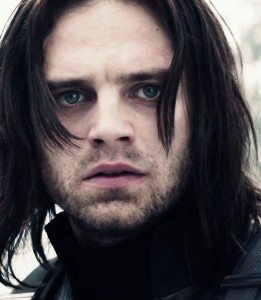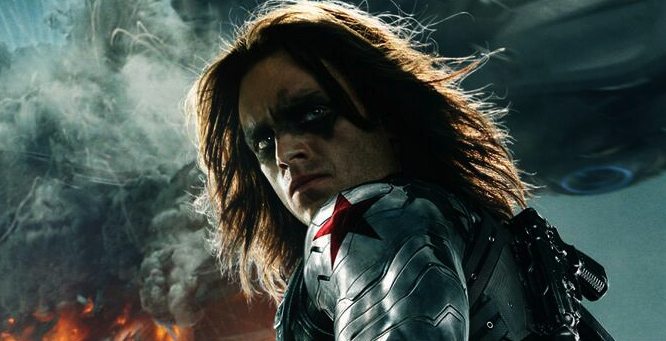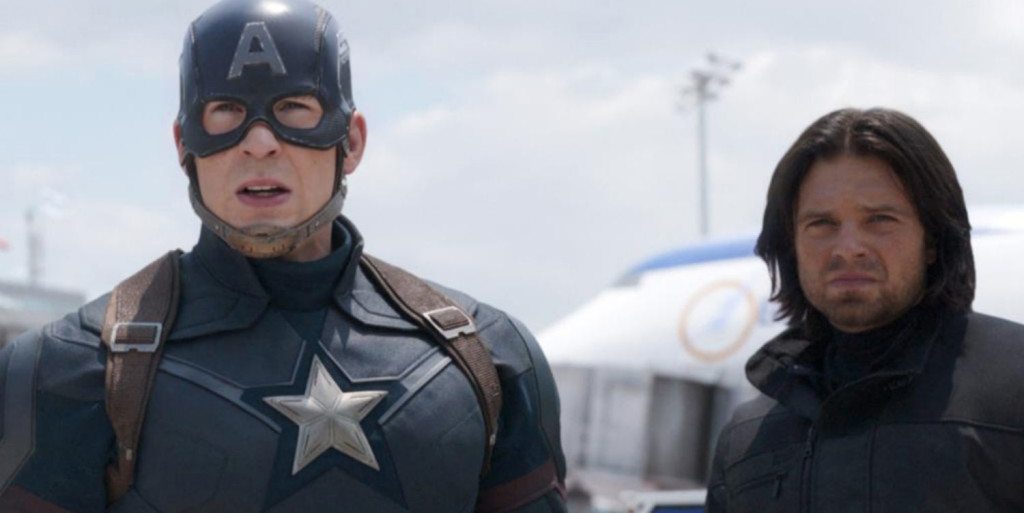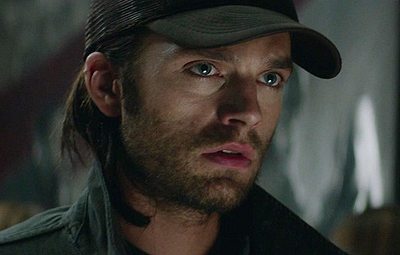In case you haven’t noticed, women really like the Marvel Cinematic Universe’s Bucky Barnes. Surprisingly, the direct question of “why?” does not seem to have been asked, which suggests that the question of “what women want” isn’t actually something men are that interested in after all. However, after discussing this with other women and analyzing fan spaces, the answer becomes rather apparent. Bucky Barnes has a type of femininity that makes it possible for the female audience to empathize with him on a deeper level than other physically attractive male characters.

Hollywood has a serious dearth of female representation, which trains women to identify with male characters. So when a character like Bucky is incidentally positioned, as he is in the Captain America trilogy, in a way that potentially mirrors the female experience, women viewers latch onto the character more than they would otherwise. Since he’s a side character, Bucky’s character arc throughout all three movies is a little messy, but each film takes part in a pattern that makes his character more comparable to female MCU characters than other male characters.
The First Avenger
The first Captain America film is sometimes said to be a modernized replication of old World War II propaganda movies, but as we well know, those films are far from the only genre that had The Girl. The Girl, as in, the movie’s love interest who finds herself in mortal danger and needs rescuing by the film’s hero, if she doesn’t die in order to become “motivation” (see also: fodder for manpain).
However, The First Avenger offers a pleasant twist to this usual dynamic. The film’s Girl, Peggy Carter (Hayley Atwell), is a British government agent who is armed with a rough exterior to help her fight through everyday 1940’s misogyny—as well as scarily accurate shooting aim.

Since it is implausible that someone as competent and resilient as Peggy would find herself helpless, the damsel role that catalyzes Steve Rogers (Chris Evans) into becoming Captain America had to shift onto another character. The filmmakers chose Bucky (Sebastian Stan), who they altered from the comics version of Steve’s sidekick to Steve’s childhood friend. Steve fights through a bitter winter in Italy and a German POW camp almost entirely on his own just in time to pluck Bucky from death via medical experimentation.
Bucky works because, as Steve’s only friend from childhood, he keeps a position of intimacy in Steve’s life while not acting as a threat to the film’s heteronormative relationship. His death also doesn’t make the film too grim when he inevitably falls from a freight train as he fights alongside Steve, although it does justify a final push for Steve to defeat The First Avenger’s main antagonist, Red Skull. Thus, Bucky fulfills his damsel role in both the traditional methods of rescue and manpain fodder demise.
While functioning as a plot tool, Bucky doesn’t quite make a splash in the first movie as a character in his own right. He doesn’t make his own decisions—or at least none that impact the film—and works merely as an accessory to Steve’s story. Despite Marvel’s intention to keep his relationship with Steve brotherly, this makes him quite comparable to many of Hollywood’s female love interests.
The Winter Soldier
In the second Captain America film, The Winter Soldier, Steve presumes Bucky dead until almost an hour and a half into the movie. Upon Steve’s visit to the Smithsonian Museum’s exhibit on his life, the audience is reminded of Bucky’s role in the previous film as well as his death (“Barnes was the only Howling Commando to give his life in service of his country”). While taking in the many mementos present at the exhibit, Steve watches a short projector reel of him and Bucky standing close and laughing together at some point during their time as soldiers in WWII before turning to a video where someone unseen interviews Peggy. The next scene cuts to Peggy’s hospice room, where the audience then learns that she is near the end of her life.

These two scenes run subsequently in order to establish Steve’s current emotional predicament at the beginning of The Winter Soldier. In essence, his condition as a man out of time has left him alone and without the reliable foundation of supportive friends he had during his (original) lifetime. However, this element also casts a light on the similar roles Bucky and Peggy played, in that Steve viewed them as invaluable additions to his life and people who connected with him on an intimate level. Without Bucky’s and Peggy’s affection and guidance, Steve’s life is emptier. As a side effect, Bucky is now overtly categorized with Peggy instead of simply taking her place in the film’s structure, and there is incidental implication that they overlap in more ways than one.
Then, of course, Bucky—under the Winter Soldier moniker—actually reappears, complete with long hair and oil smeared over his eyes like extensive make up. Quite frankly, he looks like a femme fatale. The camera loves him like a femme fatale too, letting him take up many frames with his powerful presence. The Winter Soldier is certainly intimidating, but goddamn does that leather make him sexy as well.

Not only that, but the past 70 years hadn’t treated him well. As in, HYDRA erased all his memories using an extremely painful electroshock method and brainwashed him into serving as their secret super assassin. Everything that made Bucky himself was ripped out repeatedly and replaced with something painful, ugly, and relentless—this article would not be the first piece of writing on the internet to suggest parallels to a rape narrative.
Even without the rape narrative, however, Bucky is clearly under the control of dominating men who expect him to fit into their narrow expectations of what their super assassin should be. One of the most painful moments of the film is when HYDRA handler Alexander Pierce (Robert Redford) physically strikes a dazed Bucky for asking questions about Steve. As further punishment, he is then forced to undergo a session of electroshock therapy. Women recognize this dynamic as the one they live in every day. They are expected to mold how they dress, talk, and react according to a world that is run by men just like Pierce. When women are perceived to have made mistakes in their work or behavior, they are disproportionately punished in comparison to men in the same positions and often have no way of fighting back. Bucky is not a unique victim; he’s a peer to every woman who lives in our society.
Civil War
Civil War, the final installment of the Captain America trilogy that I am loathe to call an installment at all, is more difficult to parse in terms of Bucky’s arc. The main problem: neither he nor Steve have one.
What viewers see of Bucky in this movie is a far cry from the implications that came at the end of The Winter Soldier—that he and Steve would reunite (which happened), that the movie would devote a necessary amount of real estate to their internal and external character arcs (this did not happen), and that they would reach some form of closure about their respective and parallel situations (which would require the second suggestion and therefore never came close to happening).

As stated earlier, in The First Avenger, Bucky serves Steve in totality as a side character and never steps out to signal that he has any individual agency or interests. In The Winter Soldier, he achieves that in the scene set in HYDRA’s lab. “Who was the man on the bridge?” he asks Pierce, who gives an (unknowingly) incomplete answer. Bucky resists it, stating, “But I knew him.” This resistance carries to the film’s climax, where he fights Steve on the helicarrier, first to complete his mission as ordered by his handlers but then—based on the amount of audible strain present in Sebastian Stan’s performance that had not appeared in the Winter Soldier’s prior three scenes—in order to quell the man who is causing conflict in his damaged brain.
At the end of The Winter Soldier, Bucky chooses to save Steve from drowning in the Potomac River and chooses to leave afterward. The next time he’s seen again, in Civil War, however, the narrative directs him in such a way that he seems in many ways to recede back to the agency-less character seen in The First Avenger. Running from Black Panther (Chadwick Boseman), who wants to murder him, is the least violent option of self-defense, not a choice. The United Nations council shoving him back into SHIELD-ordered therapy, where he’s then immediately put under the whims of Zeno and forced to once again become the Winter Soldier, definitely is not a choice. He fights Iron Man (Robert Downey Jr.), once again in self-defense, alongside Steve because Iron Man wishes to punish him based on the Winter Soldier murdering his parents, which Bucky also did not choose to do.

Instead, Bucky once again functions as a mere accessory to Steve’s story and most of the female characters in the same film fare little better. In Civil War, Peggy dies without a final goodbye to Steve, her niece Sharon (Emily VanCamp) kisses Steve hours after her funeral and provides nothing otherwise but needed background information, and the Scarlet Witch (Elizabeth Olsen) spends the whole film with her agency taken from her by Iron Man and Vision (Paul Bettany) before she’s rescued by Hawkeye (Jeremy Renner). Bucky’s treatment is often more comparable to that given to female characters than to other male characters.
Intentional or not, Bucky fills a feminine, but strong role desperately craved by the female audience and Marvel’s misuse and neglect of the character in its most recent film is just one more sign that the studio cares little for that audience. It’s not just women who see the character for what he represents, however. Queer spaces have embraced the character as one of their own, too. The online campaigns to have Bucky acknowledged as a character outside of the cissexual, heterosexual binary are unprecedented in the history of superhero filmmaking.
Within Bucky and his popularity is a condemnation of Hollywood on multiple levels. How the industry treats women like they don’t matter. How it treats queer people like they don’t exist. How the people in charge of these films dismiss and attack the feminine as weak and undesirable both subtly and blatantly.
It may be an accident that Bucky fell into the feminine sphere, but we desperately need more characters like him. In a world filled of cisheterosexual, white Chrises, those who don’t belong to that group need spaces where they can find comfort in who they are. Bucky Barnes is by far my favorite hero in the MCU. And I hope the studio never spoils him with masculinity.

